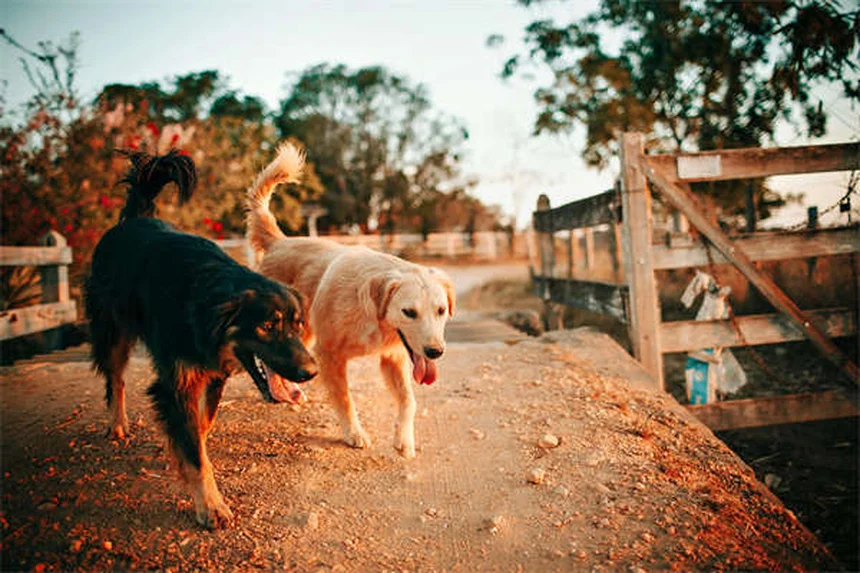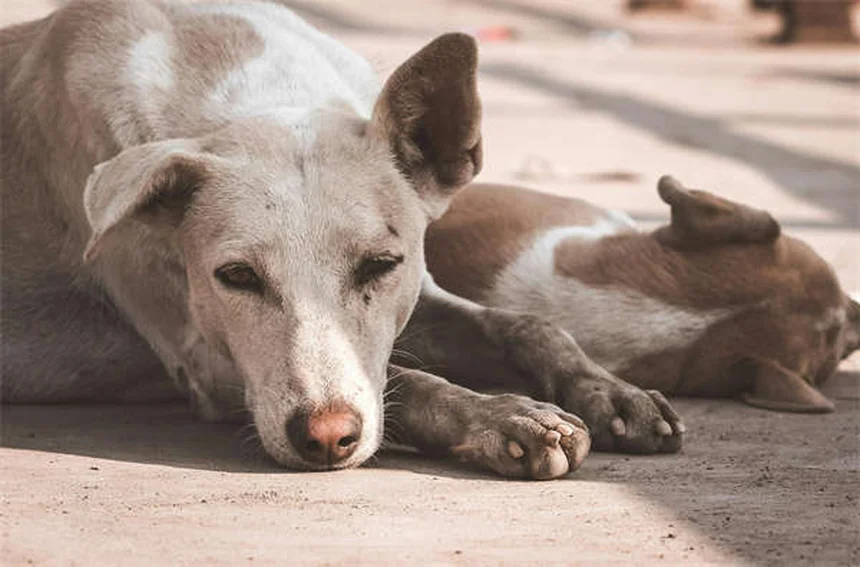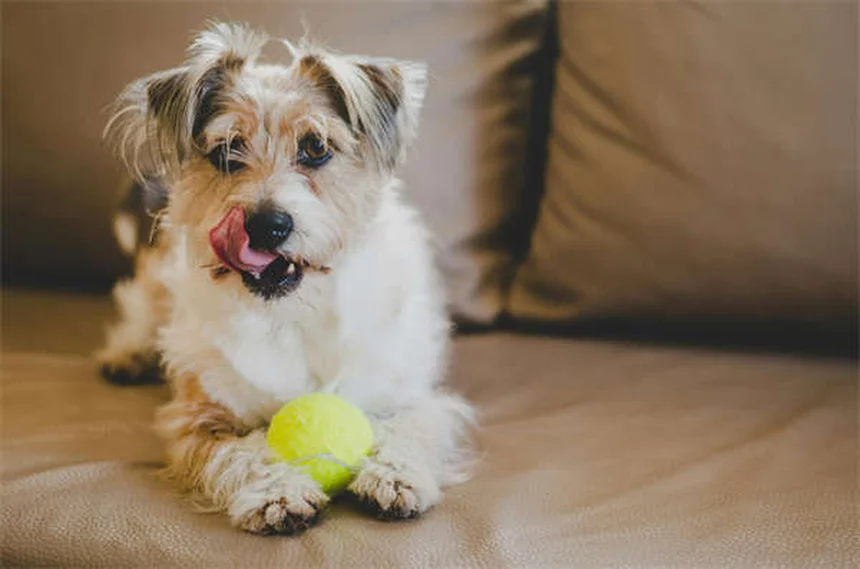What is clostridial enterotoxicosis in dogs? The answer: It's a common gut infection caused by Clostridium perfringens bacteria that can turn your pup's digestive system upside down. While it sounds scary, most cases are manageable when caught early. I've seen countless dogs bounce back quickly with proper treatment - and you can help your furry friend do the same!Here's what you need to know: This condition typically causes diarrhea with mucus or small amounts of blood, abdominal discomfort, and sometimes vomiting. The good news? It rarely becomes systemic and often clears up within a week. But here's the kicker - about 20% of chronic diarrhea cases in dogs might actually be undiagnosed clostridial enterotoxicosis!Why should you care? Because understanding this condition means you can spot the warning signs early and get your dog the right treatment fast. In this guide, we'll walk through everything from symptoms to solutions, so you'll be prepared if your pup ever picks up these unwanted gut guests.
E.g. :Capstar® for Dogs & Cats: Fast-Acting Flea Treatment Guide
- 1、Understanding Clostridial Enterotoxicosis in Dogs
- 2、Spotting the Signs: Symptoms to Watch For
- 3、What Causes This Gut Trouble?
- 4、Getting to the Bottom of It: Diagnosis
- 5、Treatment: Getting Your Pup Back to Normal
- 6、Living With and Managing the Condition
- 7、Beyond the Basics: What Most Owners Don't Know
- 8、Alternative Approaches Worth Considering
- 9、When Conventional Treatment Isn't Enough
- 10、Prevention in Multi-Dog Households
- 11、Final Thoughts: Living With a Sensitive Stomach
- 12、FAQs
Understanding Clostridial Enterotoxicosis in Dogs
What Exactly Is This Condition?
Ever noticed your dog acting strange after sniffing around in the yard or getting into the trash? That could be Clostridial enterotoxicosis - a fancy name for when Clostridium perfringens bacteria throw a party in your pup's gut. These bacteria love hanging out in decaying plants, marine environments, and uncooked meats left sitting out too long.
Here's the good news: while it sounds scary, this condition usually stays in the intestines and doesn't spread throughout the body. Think of it like an unwanted houseguest who only messes up your kitchen. Acute cases typically clear up in about a week, but some dogs might deal with recurring diarrhea episodes every few weeks for months or even years. Did you know this condition might be behind 20% of large bowel diarrhea cases in dogs?
Why Dogs Get It More Than Cats
Ever wonder why Fido seems more prone to this than Fluffy? It's simple - dogs are natural explorers! They're more likely to:
- Sniff around decaying vegetation
- Raid the garbage for questionable treats
- Socialize with other dogs at kennels or parks
The silver lining? Most dogs have natural antibodies that can fight off these bacteria. It's like their immune system comes with built-in bouncers to kick out unwanted microscopic party crashers!
Spotting the Signs: Symptoms to Watch For
 Photos provided by pixabay
Photos provided by pixabay
The Obvious Red Flags
If your dog's poop could talk, here's what it might say about Clostridium perfringens infection:
"I'm shiny with mucus!"
"I've got tiny blood streaks!"
"I'm either super watery or frustratingly small!"
But diarrhea isn't the only clue. Your pup might also show discomfort by standing in that weird "play bow" position all the time or curling up protectively around their belly. And let's not forget the embarrassing gas - we're talking room-clearing levels here!
When to Really Worry
While most cases are mild, these symptoms mean it's vet time:
| Mild Symptoms | Serious Symptoms |
|---|---|
| Occasional diarrhea | Frequent watery stools |
| Mild abdominal discomfort | Persistent vomiting |
| Increased gas | Fever |
Remember, vomiting and fever are uncommon but serious. If your dog stops eating or seems lethargic, don't wait - call your vet immediately.
What Causes This Gut Trouble?
The Bacterial Party Crashers
So what turns Clostridium perfringens from quiet gut residents to troublemakers? It's all about overgrowth. Imagine your dog's intestines are like a neighborhood - normally everyone gets along, but when these bacteria multiply too much, they start causing problems.
Common ways dogs pick up these unwanted guests:
- Eating raw or undercooked meat (that steak you dropped on the floor?)
- Snacking on spoiled food from the trash
- Drinking from questionable puddles
- Socializing with infected dogs at kennels or dog parks
 Photos provided by pixabay
Photos provided by pixabay
The Obvious Red Flags
Why do some dogs get sick while others don't? Here's what tips the balance:
Ever suddenly changed your dog's food? That's like rolling out the red carpet for gut bacteria to misbehave. Other risk factors include digestive stress from conditions like parvovirus or inflammatory bowel disease. Even emotional stress can weaken your dog's defenses!
Here's a thought: Could your dog's recent boarding stay be the culprit? Absolutely! Kennels are like kindergarten for germs - lots of dogs sharing space means lots of opportunities for bacteria to spread.
Getting to the Bottom of It: Diagnosis
What Your Vet Needs to Know
When you visit the vet, they'll want the full story. Be ready to answer:
"Has your dog been dumpster diving lately?"
"Did they snack on something questionable during your last hike?"
"Have they been hanging out with new dog friends recently?"
These details help piece together the puzzle. Your vet will do a physical exam and likely run some basic blood tests, though these often come back normal with this condition.
The Poop Detective Work
Here's where things get interesting. The most important test is examining a fecal sample, but it's tricky - there's no perfect test for Clostridium perfringens. Sometimes tests give false positives because other stuff in the poop interferes.
In stubborn cases, your vet might recommend an endoscopic exam. Picture a tiny camera exploring your dog's intestines - it's like sending in a submarine to investigate! They might even take small tissue samples to get a clearer picture.
Treatment: Getting Your Pup Back to Normal
 Photos provided by pixabay
Photos provided by pixabay
The Obvious Red Flags
Good news! Most dogs bounce back with simple outpatient care. The treatment plan typically includes:
- Antibiotics (usually about a week's worth)
- Plenty of fresh water to prevent dehydration
- A bland, easy-to-digest diet
For severe cases where diarrhea has led to dehydration, your dog might need IV fluids. Think of it as a spa day for their digestive system - complete with hydration therapy!
Dietary Changes That Help
Here's a fun fact: Did you know fiber can be a gut superhero? High-fiber diets help crowd out the bad bacteria. Your vet might recommend adding psyllium (that's the stuff in Metamucil) or special probiotic foods to restore the good bacteria balance.
Probiotics are like sending reinforcements to your dog's gut army. Look for foods or supplements containing lactobacillus - these friendly bacteria help keep the peace in your pup's digestive tract.
Living With and Managing the Condition
Long-Term Care Strategies
For dogs with chronic issues, management is key. Your vet will likely recommend sticking with that high-fiber diet we talked about. It's not just about treating the current problem - it's about preventing future flare-ups.
Regular vet check-ups are important too. Think of it like taking your car in for maintenance - catching small issues early prevents bigger problems down the road.
Prevention Tips
Want to keep your dog's gut happy? Try these simple steps:
- Keep trash securely covered (dogs are master trash bandits!)
- Avoid sudden diet changes - transition foods gradually over 5-7 days
- Be cautious with raw meats - if you feed them, handle them safely
- Consider probiotics when your dog is stressed (like during boarding)
The best news? Most dogs with healthy immune systems can fight off these infections easily. With proper care and attention, your furry friend will be back to their happy, tail-wagging self in no time!
Beyond the Basics: What Most Owners Don't Know
The Hidden Dangers in Your Backyard
You might think your yard is safe, but it's actually a Clostridium perfringens playground! Those fallen leaves you haven't raked? Perfect breeding ground. The compost pile you're so proud of? Basically a bacteria buffet. Even that cute little puddle from yesterday's rain could be hosting unwanted microscopic guests.
Here's something interesting - the bacteria multiply fastest between 40-140°F. That's why summer months see more cases. I once had a client whose dog got sick after chewing on an old tennis ball that had been sitting in the sun. Who would've thought? The lesson here: regular yard patrols are just as important as house cleaning when it comes to preventing gut issues.
The Surprising Connection to Human Health
Did you know that you could be carrying these bacteria too? About 15% of healthy adults have Clostridium perfringens in their intestines without issues. But here's the kicker - your dog might actually be picking it up from you! That's right, those sloppy kisses might be a two-way street for bacteria.
Now before you panic, remember that most human and dog strains are different. But it does make you think twice about sharing food with your pup, doesn't it? A simple solution: wash your hands after using the bathroom and before handling your dog's food. Basic hygiene goes a long way in keeping everyone's gut happy.
Alternative Approaches Worth Considering
Natural Remedies That Actually Work
While antibiotics are often necessary, some natural options can support recovery. Pumpkin puree (not pie filling!) is my go-to recommendation. It's packed with fiber that helps firm up stools. A tablespoon per 10 pounds of body weight mixed into their food works wonders.
Another surprising helper? Bone broth. The gelatin in it helps soothe irritated intestines. Just make sure it's homemade or from a trusted pet brand - store-bought versions for humans often contain onions and garlic, which are toxic to dogs. I've seen cases where switching to bone broth-based meals cut recovery time in half!
The Power of Probiotics
Not all probiotics are created equal. Many commercial products don't contain enough live cultures to make a difference. Look for these specific strains that research shows work best for canine gut health:
| Probiotic Strain | Benefits |
|---|---|
| Enterococcus faecium | Reduces diarrhea duration by 30% |
| Bifidobacterium animalis | Improves stool consistency |
| Lactobacillus acidophilus | Boosts overall gut immunity |
Store them properly too - heat kills the good bacteria. I always tell clients to keep probiotics in the fridge, even if the label says it's not necessary. Better safe than sorry when it comes to your dog's health!
When Conventional Treatment Isn't Enough
Recognizing Chronic Cases
Some dogs just can't seem to shake this condition. If your pup has more than three episodes in six months, it's time to think differently about treatment. Chronic cases often need a multipronged approach combining diet changes, probiotics, and sometimes even low-dose antibiotics long-term.
I worked with a German Shepherd who had recurring issues for two years before we discovered his problem wasn't just bacterial - he had a mild food allergy complicating things. Once we identified and removed the allergen (turned out to be chicken), his gut finally stabilized. The moral? Sometimes you need to look deeper than the obvious culprit.
The Emotional Toll on Dogs (and Owners)
We don't talk enough about how chronic gut issues affect a dog's mood. Constant discomfort can make even the friendliest pup grumpy. I've seen dogs develop anxiety around meal times because they associate eating with pain. And let's be honest - cleaning up diarrhea at 3 AM isn't exactly great for your mental health either.
If you're dealing with a chronic case, consider working with a veterinary behaviorist. Simple changes like feeding smaller meals more frequently or creating a calm eating environment can make a world of difference. Remember, happy gut equals happy dog equals happy you!
Prevention in Multi-Dog Households
Stopping the Spread Between Pups
Got more than one dog? When one gets sick, the others often follow. Here's my battle-tested protocol for keeping everyone healthy:
- Separate food and water bowls during outbreaks
- Clean up poop immediately (no sniffing allowed!)
- Wash bedding in hot water with bleach
- Consider giving probiotics to all dogs as prevention
It might seem like overkill, but trust me - dealing with multiple sick dogs is way more work. I learned this the hard way when my three dogs passed around a nasty bug last winter. Never again!
The Boarding Facility Dilemma
Ever wonder why dogs often come home with tummy troubles after boarding? It's not just stress - facilities are germ central stations. But you can minimize risks:
Ask about their cleaning protocols. Good facilities will:
- Use veterinary-grade disinfectants
- Have separate areas for sick dogs
- Require current vaccinations
Better yet, consider in-home pet sitting when possible. Fewer dogs means fewer germs. And let's be honest - your pup would probably rather stay in their own bed anyway!
Final Thoughts: Living With a Sensitive Stomach
Embracing the New Normal
Some dogs just have sensitive stomachs, and that's okay. With proper management, they can live completely normal lives. I've got clients whose dogs eat special diets and take daily probiotics, and you'd never know they ever had issues.
The key is patience and consistency. Gut health isn't fixed overnight. But stick with it, and you'll be rewarded with fewer messes to clean up and a much happier canine companion. And isn't that what we all want?
When to Celebrate Small Victories
In the world of gut health, normal poop is worth celebrating! Keep a journal to track progress - what works, what doesn't, and any patterns you notice. Over time, you'll become an expert on your dog's unique digestive system.
Remember that time you did a happy dance over a perfectly formed stool? Welcome to the club! We've all been there. Because at the end of the day, our dogs' health and happiness make all the cleaning, worrying, and vet visits worthwhile.
E.g. :Clostridium perfringens Causes Diarrhea in Dogs - Veterinary Partner
FAQs
Q: How do dogs get clostridial enterotoxicosis?
A: Dogs typically pick up Clostridium perfringens the same way they get into trouble - by exploring their environment! The bacteria thrive in decaying plants, marine areas, and improperly stored meats. Common sources include:
1. Sniffing or eating rotting vegetation during walks
2. Raiding the trash for spoiled food (that pizza box is more dangerous than you think!)
3. Drinking from contaminated puddles or ponds
4. Socializing with infected dogs at kennels or dog parks
We often see cases after dogs board at facilities or attend doggy daycare. The bacteria can spread through contact with infected feces, so always pick up after your pup and keep their living areas clean.
Q: What are the first signs of clostridial enterotoxicosis in dogs?
A: The first red flags usually appear in your dog's poop - not the most pleasant topic, but crucial for catching this early! Watch for:
• Shiny mucus coating on stool (looks like slime)
• Small streaks of fresh blood (bright red, not dark)
• Increased urgency to go, with small frequent stools
Your dog might also stand with their front end lowered (like a play bow) or resist belly rubs due to discomfort. We call this "abdominal guarding." If you notice these signs plus unusual gas (we're talking room-clearing levels), it's time to call your vet.
Q: How is clostridial enterotoxicosis diagnosed?
A: Diagnosing this condition can be tricky - it's like playing bacterial detective! Here's what we typically do:
1. Fecal tests to look for toxins or bacterial spores (though false positives are common)
2. Blood work to rule out other conditions
3. Sometimes endoscopy to visualize the intestines
Be prepared to answer questions about your dog's recent activities - that hike where they ate something questionable might hold the clue! The diagnosis often comes down to combining test results with symptoms and history.
Q: What's the treatment for clostridial enterotoxicosis in dogs?
A: The treatment plan we usually recommend includes:
1. Antibiotics (typically metronidazole or amoxicillin for 5-7 days)
2. Dietary management - bland food then transitioning to high-fiber
3. Probiotics to restore good gut bacteria
For severe cases with dehydration, your dog might need IV fluids. The good news? Most pups show improvement within 2-3 days of starting treatment. Chronic cases may need longer antibiotic courses and permanent diet changes.
Q: Can clostridial enterotoxicosis be prevented?
A: While you can't prevent all cases, these simple steps dramatically reduce risk:
• Secure your trash - use locking lids or keep cans in cabinets
• Transition foods gradually over 5-7 days when changing diets
• Consider probiotics during stressful times (boarding, travel)
• Avoid raw meats unless you're committed to safe handling
We also recommend keeping your dog's living area clean and picking up poop promptly at dog parks. Remember - a healthy gut starts with good habits!







